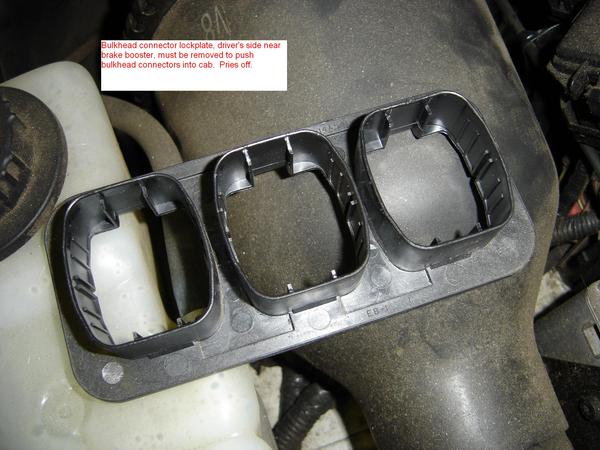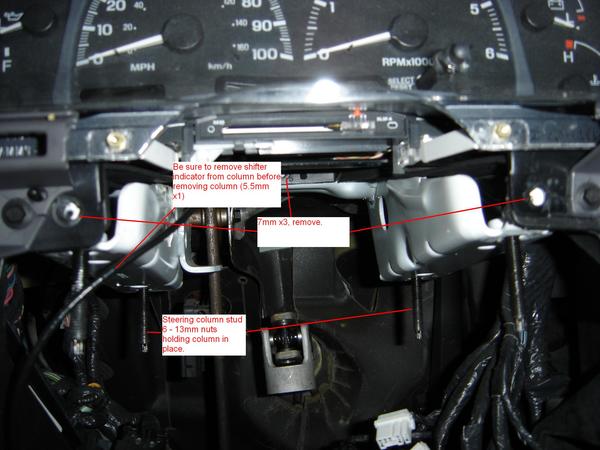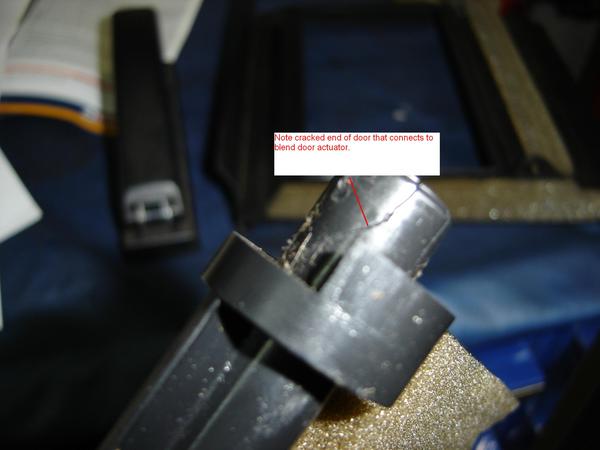How To Overhaul Cv-joints
Click here for Transaxle Removal & Installation
Click here for Automatic Transaxle Replacement
Inner Cv-joints And Outer Cv-joints Replacing
Starting With Inner Cv-joints
Please Make Sure You take proper safety precautions. Don't Ignore Safety Note And Helpful Warnings.
Inner CV-Joint & Boot:--
Start with disconnecting the negative battery cable.
Remove the halfshaft and retaining clamps.
Slide the boot down the shaft away from the tri-pot housing.
NOTE
When separating the spider joint from the tri-pot joint housing, hold the rollers in place on the trunnions to prevent the rollers and needle bearings from falling away.
Carefully, slide the shaft/spider assembly from the tri-pot housing.
Remove the spider assembly-to-shaft snapring; then, slide the spider assembly off the shaft.
WARNING
If necessary, tap the spider assembly off the shaft using a brass drift; be careful not to hit the outer bearings.
Slide the boot off the shaft.
Thoroughly, inspect all parts for signs of excessive wear; if necessary, replace the halfshaft.
NOTE
Component parts are not serviceable and must be replaced as an assembly.
See below the diagram showing halfshaft inner tri-pot joint and snapring

For more help Another diagram is provided showing View of the halfshaft boot, shaft and boot clamp

How To tightly secure Halfshaft boot clamp.Please note this,while reassembly it has to be that tight.
Securing the halfshaft boot clamp


Once the completely disassembly ios done.Inspect the parts.What ever looks dirty try cleaning and servicing it.If any part seems broken or damaged then it has to be replaced with new part.
Once all inspection is done continue with installation procedure.
Below is the procedure for How To install:
Slide the inner tri-pot boot clamp and boot onto the shaft; then, position the boot so that only the thinnest (sight) groove is visible on the shaft.
Install the spider assembly onto the shaft just far enough so that the snapring can be installed.
WARNING
If necessary, tap the spider assembly onto the shaft using a brass drift; be careful not to hit the outer bearings.
Install the snapring onto the shaft; make sure that the snapring is fully seated in the groove.
If installing a new boot, distribute 1 / 2 of the grease in the service package inside the tri-pot housing and the other 1 / 2 inside the boot.
Carefully, slide the spider assembly and shaft into the tri-pot housing.
Position the inner boot clamp evenly on the sealing boot.
Using the Crimper tool C-4975, place the tool over the clamp bridge, tighten the tool nut until the jaws are completely closed (face-to-face).
WARNING
The seal must not be dimpled, stretched or out of shape. If necessary, equalize the seal pressure and shape it by hand.
Position the boot onto the tri-pot housing retaining groove and install the retaining clamp evenly on the boot.
Using the Crimper tool C-4975, place the tool over the clamp bridge, tighten the tool nut until the jaws are completely closed (face-to-face).
Install the halfshaft into the vehicle.
The Diagram Showing How To Install Halfshaft In the vehicle

The Above Procedure was for Inner Cv-joint.
And Now Comes The Details For
Outer CV-JointWithout fail take safety Precautions.
Remove the following parts:-----
Disconnect the negative battery cable.
Remove the halfshaft and the retaining clamps.
Slide the boot down the shaft away from the CV-joint housing.
Remove the grease to expose the CV-joint-to-shaft retaining ring.
Spread the snapring ears apart and slide the CV-joint assembly off of the shaft.
Slide the boot off the shaft.
Thoroughly, clean and inspect all parts for signs of excessive wear; if necessary, replace the halfshaft.
NOTE
Component parts are not serviceable and must be replaced as an assembly.

Slide the boot down the shaft away from the CV-joint housing.
Remove the grease to expose the CV-joint-to-shaft retaining ring.
Spread the snapring ears apart and slide the CV-joint assembly off of the shaft.
Slide the boot off the shaft.
Thoroughly, clean and inspect all parts for signs of excessive wear; if necessary, replace the halfshaft.
NOTE
Component parts are not serviceable and must be replaced as an assembly.

Then follow the Installation.
To install:
Slide the outer CV-joint boot clamp and boot onto the shaft; then, position the boot so that only the thinnest (sight) groove is visible on the shaft.
Slide the outer CV-joint assembly on the shaft, spread the snapring ears, position the CV-joint and verify that the snapring is fully seated in the shaft groove.
If installing a new boot, distribute 1 / 2 of the grease in the service package into the CV-joint housing and the other 1 / 2 inside the boot.
Position the outer boot clamp evenly on the sealing boot.
Using the Crimper tool C-4975, place the tool over the clamp bridge, tighten the tool nut until the jaws are completely closed (face-to-face).
WARNING
The seal must not be dimpled, stretched or out of shape. If necessary, equalize the seal pressure and shape it by hand.
Position the boot onto the CV-joint housing retaining groove and install the retaining clamp evenly on the boot.
Using the Crimper tool C-4975, place the tool over the clamp bridge, tighten the tool nut until the jaws are completely closed (face-to-face).
Install the halfshaft into the vehicle.
This details will help to remove and install Cv-joints,Halfshafts In Your Chrysler Vehicle.







































